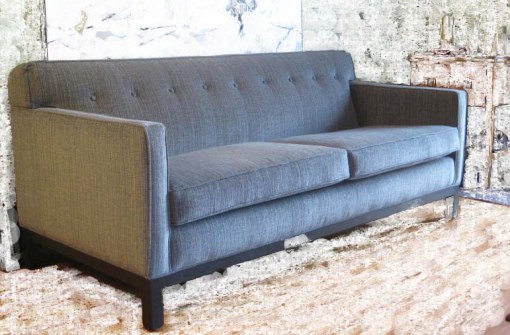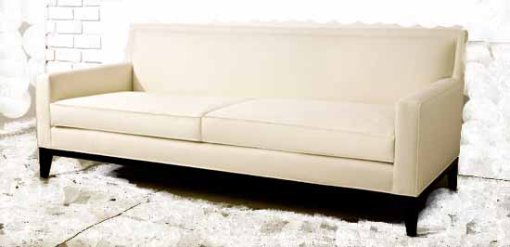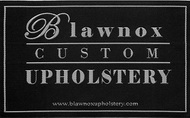|
Remodeling, decorating, and more ∨ Find top local interior designers, residential architects and home builders for your next home remodeling project. Share photos of the kitchen cabinetry and sinks you like with a top kitchen remodeler in your area. A sofa is one of the biggest furniture investments you'll make — and one of the most permanent. Even if you're just buying one for a temporary fix, it'll eventually get demoted from the living room to the family room to the basement and, finally, the dorm. Before you know it, a decade or more has passed, and that impulse purchase has become part of your life. So give some thought to it before you buy.
Quality sofas should feel solid and heavy. Flop around on one to test its sturdiness, then lift it up by the corner and shake it a bit. If it feels light or wobbly, take a pass. Look for a frame made from a kiln-dried hardwood such as oak, alder, birch, maple or, alternatively, high-quality hardwood plywood or marine plywood. Eight-way, hand-tied springs are a hallmark of fine furniture, but sinuous S-shaped springs can provide nearly as much comfort. Drop-in coil springs are a less costly alternative. Most cushions have a core of polyurethane foam; the denser the foam, the heavier it is and the longer it will last. In the cheapest furniture, the cushion is filled with just the polyurethane foam core. In better furniture the core is wrapped with Dacron batting. Higher-quality options include poly-down cushions, which have down mixed with the batting; spring-down cushions, which feature a core of springs surrounded by foam and feathers; and all down, which is all feathers (and all work, so avoid this unless you have servants). The best sofas have joints that are double doweled and fitted with corner blocks that are both glued and screwed (not stapled) into place. Quality pieces have legs that are part of the frame, not just attached to it (although removable feet do make it easier to get items through doorways). Buy the best-quality sofa that you can afford. Your purchase will be amortized over many years. Plus, it's usually cheaper to reupholster a good sofa than to buy a new one of comparable quality. Please Click on the picture above to see the rest of the article.... The Following Blog is posted at O ECOTEXTILES blog. So you’re shopping for a sofa, and you see this one in a store. In a different store, you see the one below. One sofa (the one on top) costs $3000; the other costs $1500. Why the wide disparity in price?
Shopping for a sofa is fraught with anxiety – we don’t do it often (for most people it’s every 7 – 10 years) so we don’t know how to shop for it. Knowing what to look for, and how to evaluate a sofa, might take some of the anxiety away. And knowing a bit about the components and how they’re put together will explain the difference in price. It’s important to keep that in mind while you’re being seduced by the alluring upholstery, svelte arms and come-hither cushions. But if your darling’s joints are weak, springs loose and cushions flat, you’ll quickly lose that lovin’ feeling. Not to mention the additional chemical guests you’ll be inviting into your home with the sofa. Start by asking yourself questions such as who will use the sofa – will the kids dump themselves and their bags on it right after school or is it in a room that’s just used for entertaining? How long do you want it to last? Do you want to sink into the cushions or sit up straight? Nap on the sofa? One of the first things you should do – really before doing anything else – is look at the sticker price and concentrate on the amortized cost (cost per day) of buying each one. There is a reason for the price disparity – they have to cut corners someplace, so lower quality materials are used and construction is … well let’s just say it’s not built to last. “Quality” translates into “useful life”. For simplicity, let’s assume the top sofa will last 20 years while the bottom sofa will last just 5. That would mean the top sofa costs $0.41/day while the bottom sofa costs $0.82/day = exactly double. The cost of owning the top sofa is half as much as the cost of owning the bottom sofa. Dr. Thomas J. Stanley, in his book The Millionaire Mind, observed: “By definition, millionaires tend to be accumulators, a trait they inherited from their parents who were collectors. Their parents and grandparents held on to things that had value. So the majority of millionaires have a family legacy of collecting, saving, and preserving. Waste not, want not is a theme acted out by first-generation millionaires today”.[1] With regard to how this trait applies to buying furniture: They deliberately purchase furniture today they can pass on to the younger generation tomorrow. This, in essence, is their definition of quality furniture. It will outlive a person’s normal adult life span, will never lose its appeal, and will probably appreciate in value.[2] A good quality sofa is an investment, like any other quality purchase that you expect to last. For the next few weeks I’ll break a sofa down into component parts and talk about each one separately, starting this week with the frame and suspension system: FRAME: A very low cost sofa is probably made of engineered wood – such as plywood, particleboard, Medium Density Fiberboard (MDF) or glulam - all of which can legally be referred to as “solid wood products”. Engineered wood (or composite, man-made or manufactured wood) are made by binding the strands, particles, fibers or veneers of wood with adhesives – most often that means urea formaldehyde (a known carcinogen) and finished with polyurethane or aluminum oxide. In laymans terms, MDF (for example) is sawdust held together with glue. MDF has a life span of 1/10th to 1/4ththat of solid wood, properly constructed – and costs about 1/10th to 1/4th that of solid wood. Cutting, sanding, or releasing particles of MDF into the air might be a high risk and should be avoided. If the MDF isn’t properly sealed, it can leak formaldehyde for years, pumping it into your home or office. Often manufacturers use wood veneers over MDF cores, and consumers have no idea that they’re not buying real wood. Veneers are also used on solid wood (usually a less expensive wood) –that has a similar property as the veneer, allowing them to swell and contract together with changes in humidity. They also respond similarly to stain and finish products. The bond between manufactured wood (MDF) and the veneer is not as strong or stable as that of the solid wood because MDF tends to respond more dramatically to changes in humidity and temperature, and is more rigid than solid wood, making the bond less durable. Recognizing solid wood veneer furniture is fairly simple. Look to the bottom and back edges of tabletops, drawers and shelves. Solid wood always has grain, whereas MDF and particle board do not. These unexposed edges will not typically be veneered. Another thing which is often cited as a way to evaluate quality is to pick up the sofa – if it’s really heavy, it’s probably made of solid wood – or so the saying goes. However MDF is also very heavy – so weight alone cannot really be used as a test. At the next step up, soft woods (like pine) may be used. The highest quality furniture uses kiln dried hard wood, like ash, maple or poplar, which offer greater strength and stability. jj But not all wood is created equal: we think that it’s important to choose a wood that did not come from an endangered forest (such as a tropical forest), and preferably one that is sustainably managed, because forests, according to the National Resources Defense Council, are critical to maintaining life on Earth. And that’s something we should pay attention to! (See our post about wood used in furniture athttp://oecotextiles.wordpress.com/2012/08/23/how-to-buy-a-quality-sofa-part-2-wood/ ) Wood certified by the Forest Stewardship Council (FSC) ensures that the wood used in your sofa was from a managed forest. How the wood is connected is important too. Lower cost sofas are often stapled together, or you’ll get plastic legs screwed into the frame instead of wooden legs that are part of the posts or bolted into the frame. Give it a year or two and the arms get loose or the frame wobbles. Higher cost sofas are held together with glue and dowels or tongue-and-groove joints, making the joints even stronger than the wood itself. Corner blocks (in each corner of the frame, near the legs, an extra piece of wood joins the two side rails) are important. Finally, the wood is often stained or varnished – both of which emit harmful VOC’s of various kinds, depending on the stains or varnishes used. A safe alternative is to ensure that the stains/varnishes used don’t emit harmful VOC’s such as formaldehyde, and formulated without aromatic solvents, heavy metals in the pigments, toluene solvents or other harmful chemicals. SUSPENSION SYSTEM: The suspension system determines the bounce in the cushions, and how they support your weight when you sit on them. The differing degrees of pressure your body puts on the cushions causes the coils to respond, giving what is known as “ride”. Generally, the higher the number of coils, the better the ride. The Gold Standard has always been the labor-intensive, 8-way hand-tied spring system. It’s expensive to do it right, and few companies do. When done correctly each spring is set into the deck webbing and attached, with various spring rates depending on what portion of the seat deck its located. They are then tied together (8 strings per piece) and knotted at each juncture (not looped! – only knotting keeps the spring deck together if a string breaks). Much has been said about how eight-way hand-tied spring-up systems are superior to any other kind. “It’s a sacred cow in the industry,” says Professor C. Thomas Culbreth, director of the furniture manufacturing and management center at North Carolina State University [3]. But not all eight-way hand-tied spring-ups are built the same way, and the sinuous spring – or S - system, will last just as long, and for most people the comfort level is the same. Sinuous springs are “S” shaped and run from the front of the seat to the back. These springs are supported by additional wires that cross from side to side. The S springs lack the localized response of a coil system but gives a firm ride that some people prefer, and it has less potential for sagging over time. It also makes for a strong seat, and it might be the preferred option in a sleeker style as it requires less space. Next week we’ll tackle cushions, because that’s, as they say, a whole nother ballgame. [1] Stanley, Thomas J., The Millionaire Mind, Andrews McMeel Publishing, 2001, p.294 [2] Ibid. [3]http://money.cnn.com/magazines/moneymag/moneymag_archive/2003/03/01/337933/ |
AuthorBlawnox Upholstery Archives
April 2019
Categories
All
|
SUBSCRIBE TO OUR MAILING LIST
|
412.826.9080
388 FREEPORT RD PITTSBURGH - PA 15238 www.blawnoxupholstery.com yumak@blawnoxupholstery.com ©2014 Blawnox Upholstery
All Rights Reserved |
BLAWNOX UPHOLSTERY SOCIAL
|


 RSS Feed
RSS Feed



